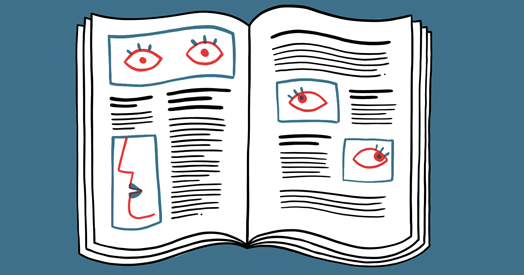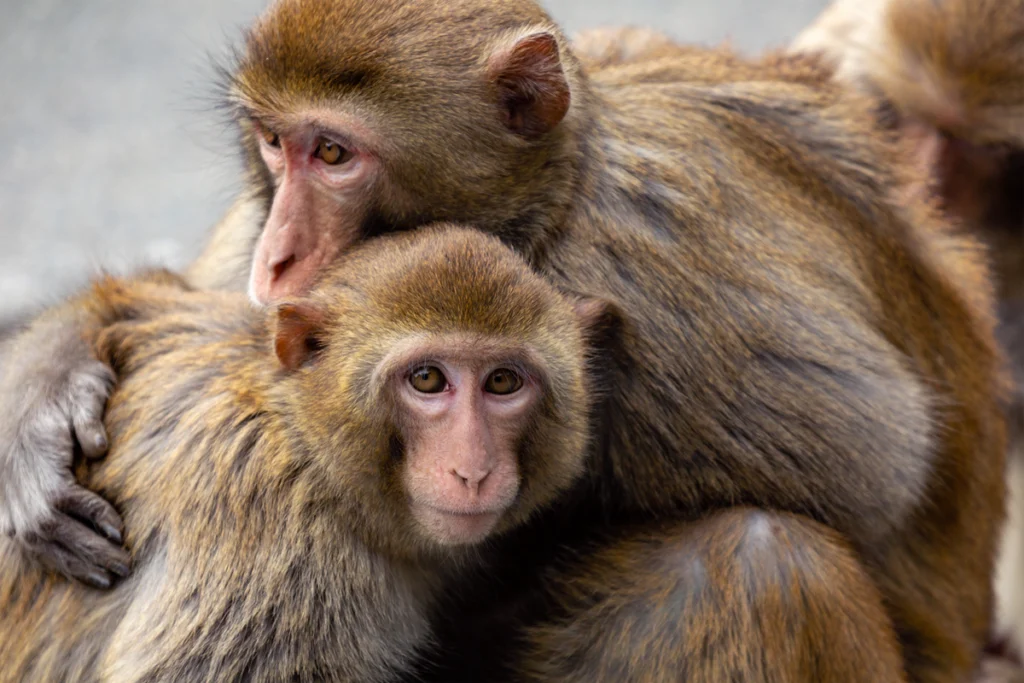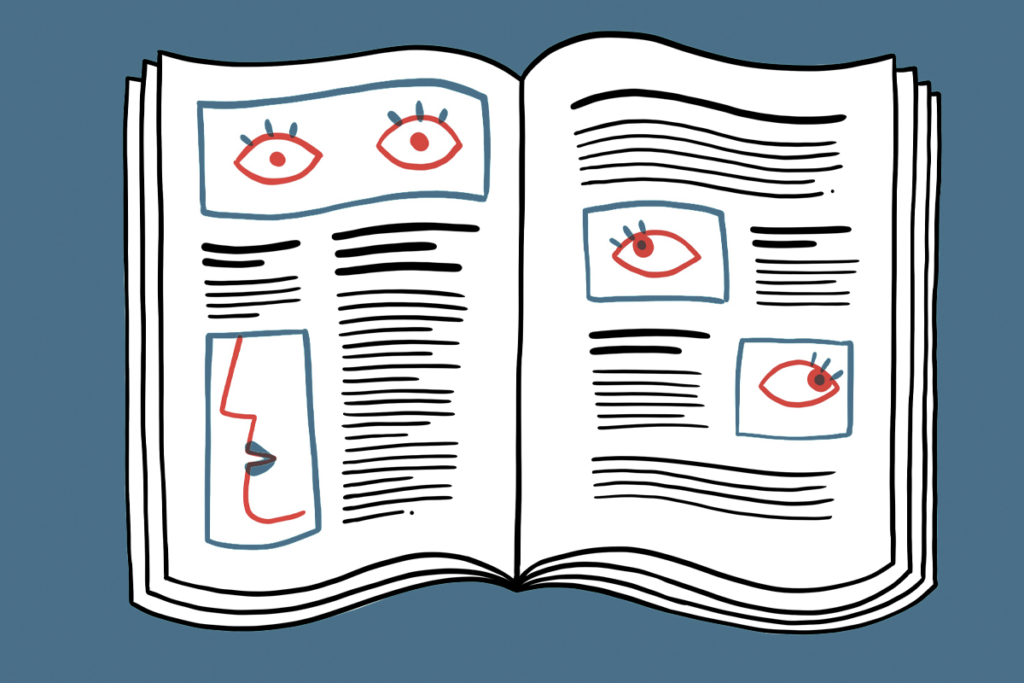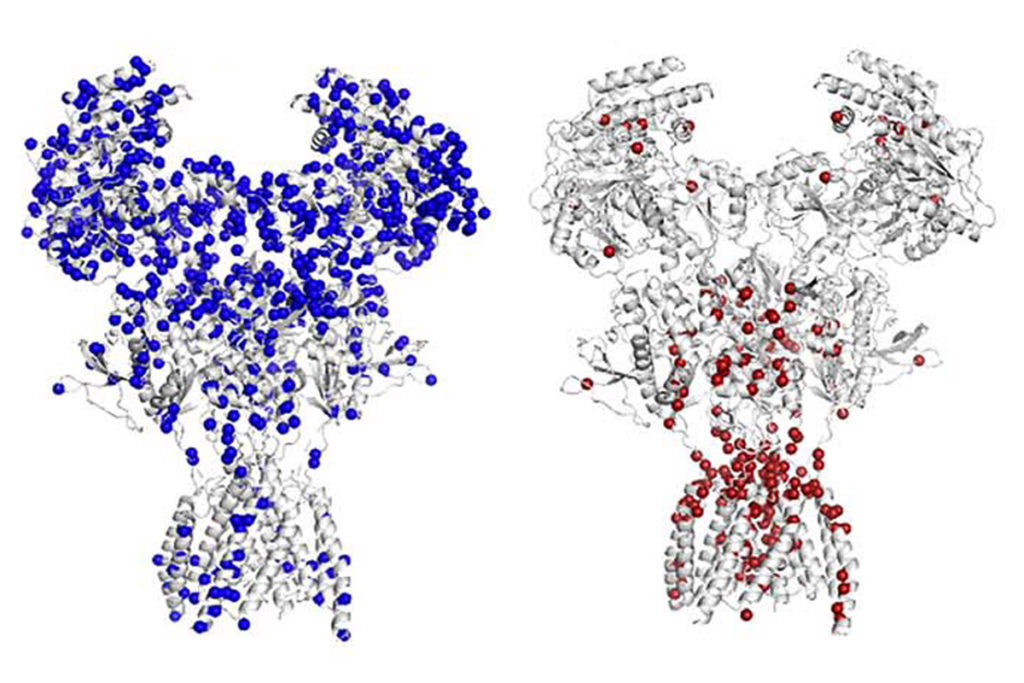Questions for Letitia Naigles: Parsing pronoun confusion
Children with autism tend to mix up personal pronouns when their language skills outpace their social awareness.
Children with autism tend to mix up personal pronouns, referring to others as ‘I’ and to themselves as ‘you.’ Some studies suggest this pronoun switching reflects a fuzzy distinction between self and others. Another possibility is that these children misuse pronouns because they have a poor grasp of language, so they resort to mimicking other people’s speech.
In a landmark 1943 paper, autism pioneer Leo Kanner first sparked the idea that pronoun confusion runs rampant in children with autism. But a new study suggests pronoun misuse in autism is less common than Kanner assumed1.
Pronoun reversals cropped up in less than 10 percent of the speech of children with autism, who ranged in age from 2 to 5 years. These infrequent flubs are still more common in autism than in typical children of similar ages, who reverse pronouns about 1 percent of the time.
Lead researcher Letita Naigles says she observes pronoun confusion in a specific group of children with autism: those who start using language before they grasp the intricacies of social interaction.
We asked Naigles, professor of psychological sciences and director of the Child Language Lab at the University of Connecticut in Storrs, to explain the possible causes of pronoun confusion and its significance in children with autism.
Spectrum: What does it mean for a child to reverse pronouns?
Letitia Naigles: Imagine that a child is sitting across the table from you. The child reaches out his hand and says, “You want some juice.” The child doesn’t mean that the person he is looking at wants juice. The child means, “I want juice.” The child is using ‘you’ when he means ‘I.’
I’ve seen statements in popular articles and developmental psychology textbooks suggesting that it’s very common for kids with autism to reverse pronouns. But I wasn’t seeing the behavior much in these children, and my clinician friends weren’t seeing it a lot either. So we decided that we needed to count how often this actually occurs, because our sense was that it has been made out to be a much bigger problem than it really is.
And indeed, one thing our study shows, which we didn’t know before, is that although pronoun reversals do occur more frequently in kids with autism, they don’t occur all the time.
S: Why do you think this phenomenon affects use of pronouns versus other types of words?
LN: Pronouns are different than nouns, such as ‘cup’ and ‘pillow.’ When you learn the word for ‘cup,’ people show you a cup, and it is called a cup no matter who’s looking at it or talking about it. But pronouns change depending on whether you’re using the pronoun as a subject, direct object or possessive.
So if you’re a little kid learning English, you’ve sailed along quite happily learning words for things and words for actions. Then all of a sudden you realize that sometimes Mom calls herself ‘Mom.’ Sometimes Mom calls herself ‘I.’ Sometimes Mom calls herself ‘me.’ And sometimes Mom calls herself ‘we,’ if she’s talking about herself plus Dad. The poor kid is thinking, “This is really complicated!”
S: How do researchers explain pronoun reversal?
LN: There are two explanations: a social one and a linguistic one.
The dominant theory is that pronoun reversal reflects delayed or possibly atypical social development. To learn to use pronouns, you need to take another person’s perspective during a social interaction and understand that the word changes according to who’s speaking.
But there’s also a linguistic aspect. The pronoun changes by person: I, you, he, she, they. And it changes by case: me, you, them, him, her. And then there’s also the possessive form: mine, yours, his, hers, theirs. Linguistically, it’s complicated.
Evidence exists for both explanations, but no one has tried to investigate them at the same time. In children with autism — who we know have perspective-taking challenges and also may be delayed in learning language — it becomes particularly important to determine whether pronoun reversal happens because of social challenges, linguistic challenges or both.
S: How did you tie these theories together?
LN: We found that pronoun reversal seems to be most common in children whose language development is ahead of their social development.
We tend to think that, to learn language, kids need to be socially clued in to what their parents are talking about. In typical children, language skills go hand in hand with social skills. Yet in many children with autism, we found that language skills are ahead of social abilities. These children had started learning language without a good inkling of how the social communication part of it worked. It’s as if they hadn’t completely figured out how the language they know is supposed to be used.
Once social perspective-taking catches up with language in these children, pronoun reversals stop. For some, this happens at age 3. For others, it’s age 5. Other children with autism might never reverse pronouns. This is where we get into the beautiful variability of children with autism.
S: Is pronoun reversal a red flag for autism in young children?
LN: Not really. What we found is that pronoun reversal is not a common occurrence in either typical children or those with autism. This is where it’s important to know how frequently the child is doing it. If pronoun reversal occurs rarely, then it could just be an occasional speech error. In this case, it’s probably not a deep-seated problem, and it will happen less often as the child becomes proficient with language.
But if a child reverses her pronouns a lot, that’s an indication that she is either having serious challenges with social perspective-taking — such that she hasn’t figured out when to use ‘I’ and when to use ‘you’ — or her language is really delayed, or both. But that doesn’t necessarily mean the child has autism. She might have some other developmental disability that affects language or social development.
S: Why do children with autism who mix up pronouns sometimes use them correctly?
LN: Well, there’s using pronouns correctly when you’re calm and relaxed and talking about something familiar. And then there’s being able to do that when you’re excited and talking about something new, and Mom is talking as well, and the conversation is going back and forth. That situation can be challenging for any young child.
So, when using pronouns correctly is not yet automatic — when it’s not automatic for a child to, say, negotiate who’s looking at which object — the child may just use the pronoun that comes to mind, which is usually ‘I’ or ‘you.’ Sometimes that pronoun will happen to be correct. Other times, it won’t be.
S: What can parents and therapists do to help children learn correct usage of pronouns?
LN: Give them lots of practice. The more you can engage a child in talking, the better at talking they become. And that’s what therapy is all about. The best advice I can give to parents is, ‘Talk to your kids.’ Look at what they’re looking at and talk about it. Conversation is what we humans are all about.
References:
- Naigles L.R. et al. Res. Autism Spectr. Disord. 27, 11-20 (2016) PubMed
Recommended reading

New organoid atlas unveils four neurodevelopmental signatures

Glutamate receptors, mRNA transcripts and SYNGAP1; and more

Among brain changes studied in autism, spotlight shifts to subcortex
Explore more from The Transmitter

Vasopressin boosts sociability in solitary monkeys

Anti-seizure medications in pregnancy; TBR1 gene; microglia
